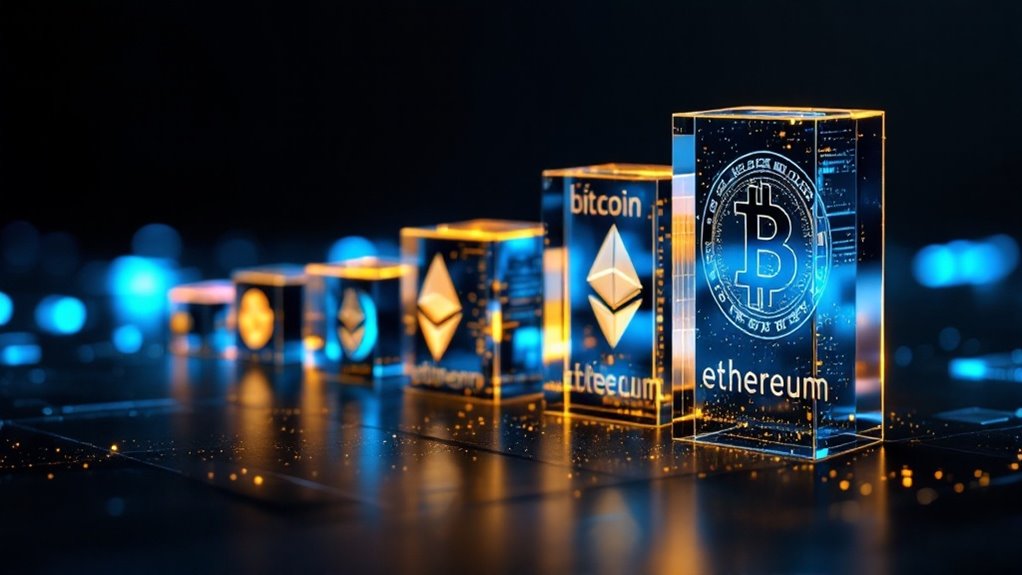MemeCoinCook.com serves up spicy crypto memes and info for entertainment only—this ain’t financial, investment, legal, or professional advice! Whipped up with AI flair, our content might have some half-baked bits, so DYOR before you dive into the crypto pot. NFA, folks—we’re just tossing out ideas, not guarantees. We make no claims about the accuracy, legality, or tastiness of our posts. Sip our content at your own risk! Check our Terms of Use for the full recipe.

What Is Solana?
Solana is a high-performance blockchain designed to process over 65,000 transactions per second at minimal cost. Its Proof of History technology creates cryptographic timestamps, enabling parallel processing of transactions. The network supports DeFi platforms, NFT marketplaces, and play-to-earn games without the hefty fees of older blockchains. Think of it as crypto’s speedway—while other chains crawl, Solana zooms. This isn’t financial advice—trade at your own risk. The architecture behind this speed might surprise you.
How Solana’s Blockchain Architecture Works

The blockchain architecture behind Solana sets it apart from traditional cryptocurrencies through its innovative design choices. Built for mass adoption, Solana combines several cutting-edge technologies to achieve lightning-fast speeds.
Key Architectural Features:
- Stateless design – Separates different transaction types for better resource management
- Validator network – Multiple nodes work together like a well-oiled machine
- Proof of History – A cryptographic timestamp system (think blockchain timeclock)
- Parallel processing – Handles 50,000+ transactions simultaneously
Unlike Bitcoin’s single-file-line approach, Solana processes transactions like a highway with multiple lanes. The mempool-less protocol enables validators to handle 100,000 transactions in seconds without the traditional waiting pool. The Turbine protocol breaks data into bite-sized packets, while validators use both TPU and TVU units for concurrent processing.
This isn’t some “wen moon” fantasy—it’s engineering at work. Solana achieves sub-second finality with extremely low fees by creating a verifiable historical record of events before they enter consensus. Developers can build and test their first Solana program directly in the browser before deploying to mainnet.
*This isn’t financial advice—trade at your own risk.*
Key Benefits and Features of the Solana Network
Beyond its architectural innovations, Solana delivers concrete advantages that make it stand out in the crowded blockchain space. The network’s combination of speed, efficiency, and affordability creates a powerful platform for developers and users alike.
Solana’s speed, efficiency, and affordability create unmatched opportunities for developers and users in the blockchain ecosystem.
Top 3 Solana Benefits:
- Lightning-Fast Transactions – Processing over 65,000 transactions per second with near-instant confirmation times
- Minimal Fees – Transaction costs remain fractions of a cent, making microtransactions actually viable
- Energy Efficiency – The network consumes considerably less power than proof-of-work chains
These features enable real-world applications that would be impossible on slower, more expensive networks. The platform’s proof-of-history consensus mechanism enhances its proof-of-stake system by using hashed timestamps to verify transaction sequences efficiently. This parallel processing capability allows multiple smart contracts and non-conflicting transactions to execute simultaneously, dramatically increasing throughput compared to single-threaded blockchains. While other networks like Litecoin achieve 2.5 minute blocks for faster confirmations than Bitcoin, Solana’s sub-second finality represents a quantum leap in blockchain performance. From DeFi protocols to NFT marketplaces, Solana’s infrastructure supports diverse use cases without breaking the bank—or the planet.
*This isn’t financial advice—trade at your own risk.*
Real-World Applications and Use Cases
While theoretical benefits paint an impressive picture, Solana’s true value emerges through actual applications transforming how people interact with blockchain technology.
Key Use Cases
DeFi Revolution
Solana hosts lending platforms and decentralized exchanges processing millions in daily volume. Users can earn yield, trade assets, and access financial services without traditional banks. Popular strategies include yield farming where users provide liquidity to protocols in exchange for token rewards. Major financial institutions like Franklin Templeton have launched government money funds on Solana, bringing traditional investment products to the blockchain.
NFT Ecosystem
Digital artists mint collections while gamers trade virtual items with real ownership. Low fees make NFT trading accessible to everyone, not just crypto whales. Compressed NFTs enable creators to mint millions of tokens for minimal costs using state compression technology.
Gaming Innovation
Play-to-earn games let players actually own their swords and spaceships. Real-time transactions enable smooth multiplayer experiences previously impossible on slower chains.
Real Asset Tokenization
Platforms tokenize real estate and commodities, letting investors buy fractional shares of physical assets. This opens traditionally exclusive markets to everyday investors.
*This isn’t financial advice—trade at your own risk.*
Frequently Asked Questions
How Do I Buy and Store SOL Tokens Safely?
Buying SOL Safely
- Use major exchanges like Coinbase or Binance
- Complete KYC verification
- Start small—don’t YOLO your savings
Secure Storage
- Hardware wallets (Ledger) offer maximum security
- Phantom wallet works great for everyday use
- Never share seed phrases—seriously, never
Pro Tips
- Move SOL off exchanges after buying
- Enable 2FA everywhere possible
- Double-check website URLs to avoid scams
*This isn’t financial advice—trade at your own risk.*
What Are the Risks and Disadvantages of Using Solana?
While Solana offers impressive speed, users should understand its potential drawbacks before diving in.
Key Risks:
- Network Outages: Solana has experienced multiple shutdowns, leaving users unable to access funds.
- Technical Complexity: Developers face a steeper learning curve than with other blockchains.
- Centralization Concerns: Despite being “decentralized,” some control remains concentrated.
- Price Volatility: SOL tokens can swing wildly in value.
*This isn’t financial advice—trade at your own risk.*
How Does Solana Compare to Other Major Blockchain Platforms?
Solana processes transactions faster and cheaper than Ethereum, handling thousands per second versus Ethereum’s dozens.
However, Ethereum offers stronger security and decentralization with its massive validator network.
Performance Comparisons
- Binance Smart Chain: Similar speeds, but Solana’s unique tech attracts more developers
- Cardano: Solana wins on speed; Cardano emphasizes careful upgrades
- Avalanche: Both fast, but Solana’s sub-second finality edges ahead
*This isn’t financial advice—trade at your own risk.*
What Was the Cause of Solana’s Past Network Outages?
In September 2021, Solana crashed for 17 hours when bots flooded the network during a token sale. Classic crypto moment.
Main culprits behind Solana’s outages:
- Transaction overload – NFT mints and bot attacks clog the system
- Technical bugs – Memory overflow and validator malfunctions
- Consensus failures – Nodes can’t agree, network stops
Despite these hiccups, developers keep patching issues to strengthen the network.
*This isn’t financial advice—trade at your own risk.*
How Much Does It Cost to Run a Solana Validator Node?
Running a Solana validator node requires serious investment. Initial hardware costs range from $5,000-$10,000 for enterprise-grade equipment.
Monthly expenses include:
- Bandwidth: $200-$500
- Vote fees: ~1.08 SOL daily
- Electricity: Variable by location
Validators need 24-core processors, 384GB RAM, and enterprise SSDs. It’s not exactly pocket change—think gaming PC on steroids.
Revenue comes from transaction fees and staking rewards.
*This isn’t financial advice—trade at your own risk.*
Conclusion
While critics worry about Solana’s occasional network outages, the blockchain continues evolving with each update. Its lightning-fast transactions and minimal fees make it a practical choice for developers and users alike. As more projects build on Solana, the ecosystem grows stronger—no “wen moon” vibes needed. Whether powering DeFi platforms or NFT marketplaces, Solana proves that blockchain technology can be both powerful and accessible.
This isn’t financial advice—trade at your own risk.



